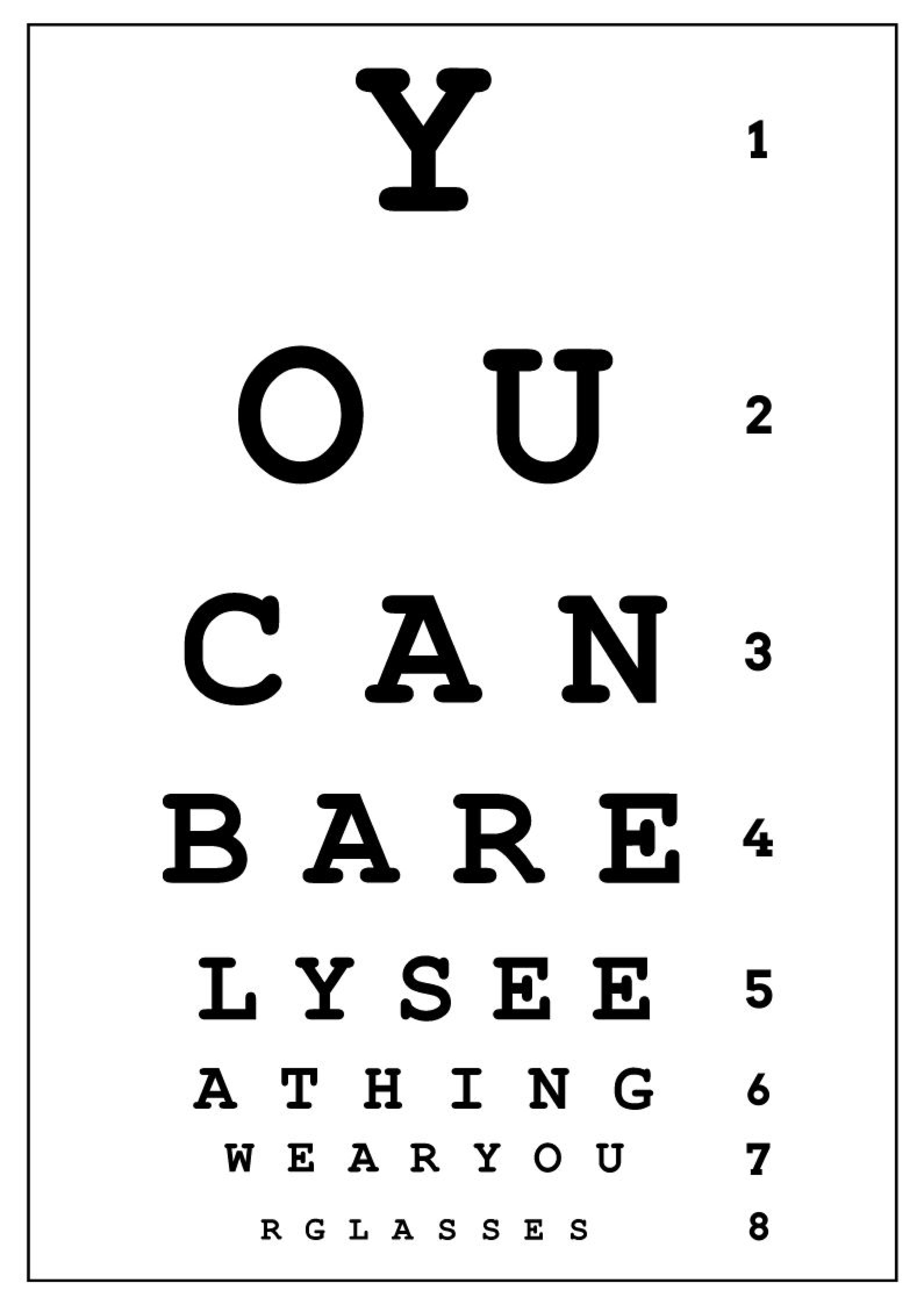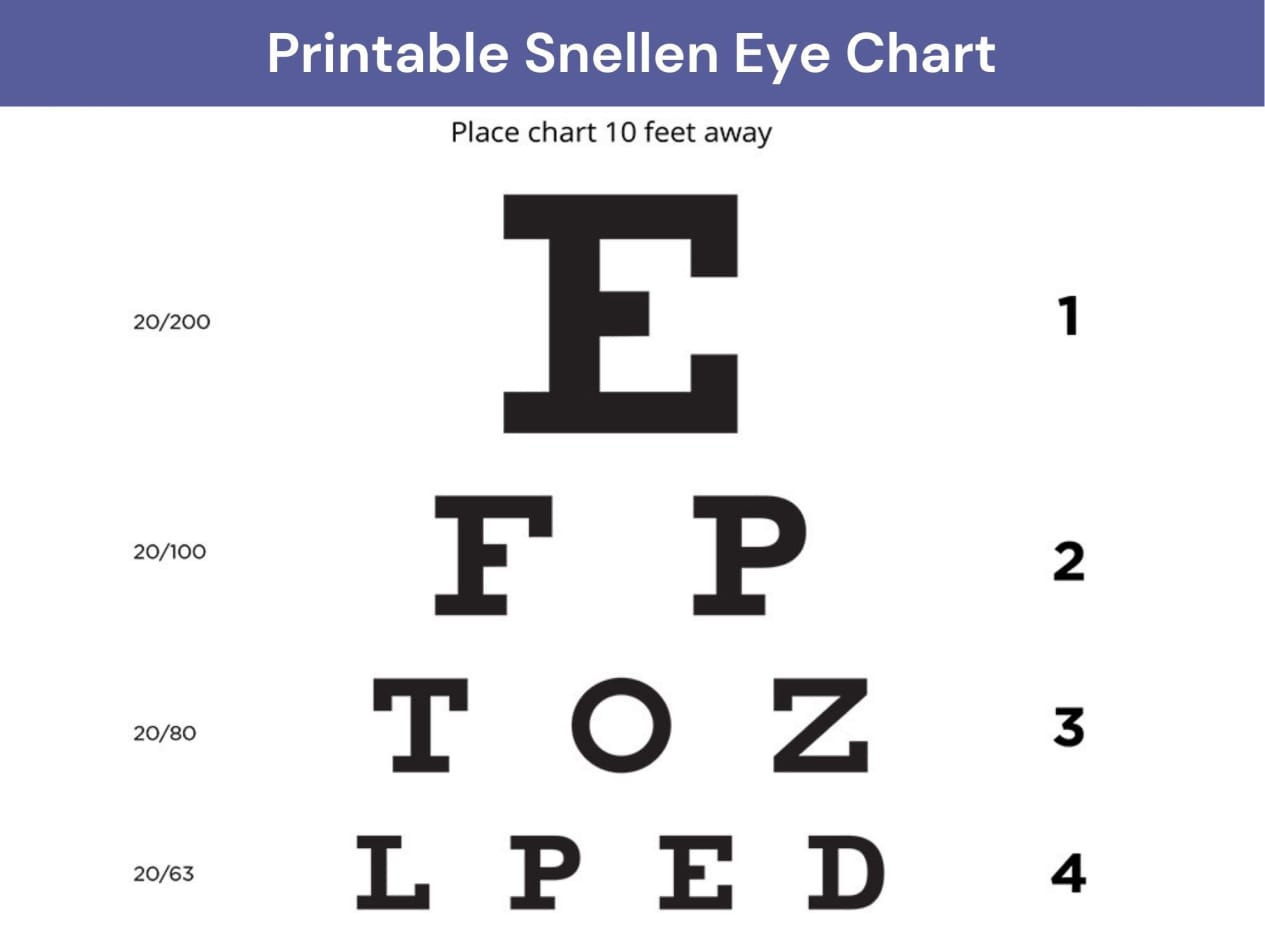This Printable Eye Exam Could Save Your Vision
Your vision is precious. It’s how you experience the world, connect with loved ones, and navigate your daily life. But early detection of vision problems is crucial for preventing irreversible damage. While a comprehensive eye exam with an optometrist is always recommended, a simple printable eye chart can serve as a valuable screening tool, potentially alerting you to issues requiring professional attention. This article will guide you through the benefits and limitations of printable eye exams, helping you understand their role in maintaining your ocular health.
Understanding the Importance of Regular Eye Exams
Regular eye exams, conducted by qualified professionals, are vital for several reasons:
- Early Detection of Diseases: Many eye diseases, including glaucoma, cataracts, and macular degeneration, often have no early symptoms. Regular exams can detect these conditions in their early stages, allowing for timely treatment and preserving vision.
- Refractive Error Correction: Eye exams determine if you need corrective lenses (glasses or contacts) to address nearsightedness, farsightedness, or astigmatism.
- Overall Health Assessment: Eye exams can reveal underlying health problems like diabetes, high blood pressure, and multiple sclerosis, as changes in the eyes can be early indicators.
The Role of Printable Eye Charts
While no printable eye chart can replace a professional eye exam, they offer a convenient way to perform a basic visual acuity test at home. These charts, often based on the Snellen chart, allow you to assess your ability to see at a distance. They are particularly useful for:
- Monitoring changes in vision: If you notice a sudden or gradual decline in your vision, a printable chart can help quantify the change before your next appointment.
- Screening children: Printable charts can provide a preliminary assessment of a child’s vision, prompting a visit to an eye care professional if needed.
- Quick self-checks: For individuals with known vision problems, a printable chart can serve as a quick check to see if their vision has worsened.
How to Use a Printable Eye Chart:
- Print the chart: Ensure the chart is printed at the correct size. Instructions for accurate printing are usually included.
- Proper lighting and distance: Stand 20 feet away from the chart in a well-lit area.
- Cover one eye: Cover one eye with your hand and read the smallest line you can see clearly.
- Repeat with the other eye: Repeat the process for your other eye.
- Record your results: Note down the smallest line you could read accurately for each eye.
Limitations of Printable Eye Exams:
It’s crucial to remember that a printable eye chart only assesses visual acuity – your ability to see clearly at a distance. It does not detect:
- Glaucoma: A condition affecting the optic nerve.
- Cataracts: Clouding of the eye’s lens.
- Macular degeneration: Damage to the macula, the central part of the retina.
- Eye muscle imbalances (strabismus): A condition where the eyes don’t align properly.
When to See an Eye Doctor
If you experience any of the following, schedule an appointment with an ophthalmologist or optometrist immediately:
- Sudden vision changes
- Blurred vision
- Double vision
- Eye pain
- Loss of peripheral vision
- Flashing lights or floaters
Conclusion
Printable eye charts are a helpful tool for preliminary vision screening, particularly for monitoring changes or initial assessments. However, they are not a substitute for regular comprehensive eye exams by a qualified professional. Regular professional eye care is essential for maintaining good eye health and preventing vision loss. Use printable charts responsibly as a screening tool, and always consult an eye care professional for diagnosis and treatment.
Frequently Asked Questions (FAQs)
Q1: Where can I find a printable eye chart?
A1: You can easily find printable Snellen charts online through a simple search. Many reputable websites offer free downloadable versions.
Q2: How often should I use a printable eye chart?
A2: The frequency depends on your individual needs. If you have no known vision problems, a yearly self-check might suffice. However, if you experience any vision changes, use it more frequently and consult your eye doctor.
Q3: Can a printable eye chart diagnose eye diseases?
A3: No, a printable eye chart only assesses visual acuity. It cannot diagnose any eye diseases or conditions. A comprehensive eye exam is necessary for diagnosis.
Q4: My child’s vision seems blurry. Should I use a printable chart before seeing a doctor?
A4: Yes, a printable chart can give you a preliminary idea, but it’s crucial to schedule an appointment with a pediatric ophthalmologist or optometrist as soon as possible.
Q5: Is it safe to use a printable eye chart?
A5: Yes, printable eye charts are safe to use as a self-screening tool. However, they should not replace professional eye care.




